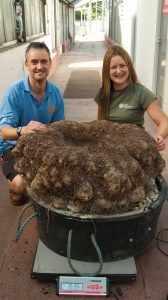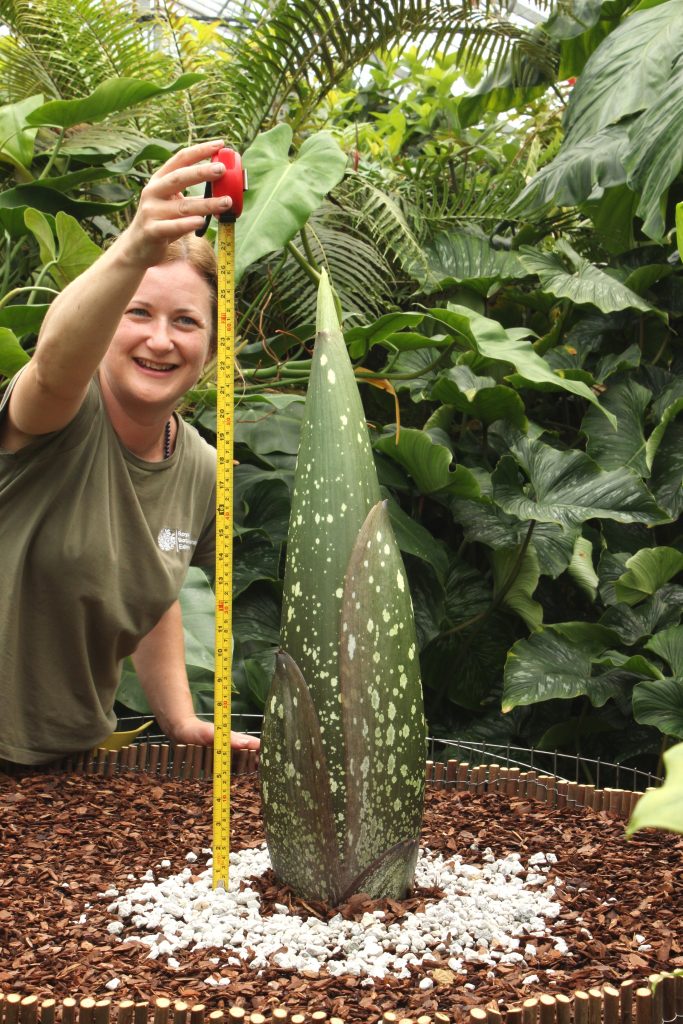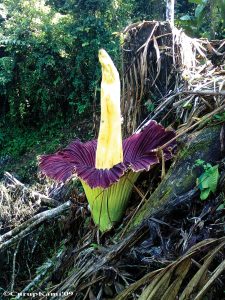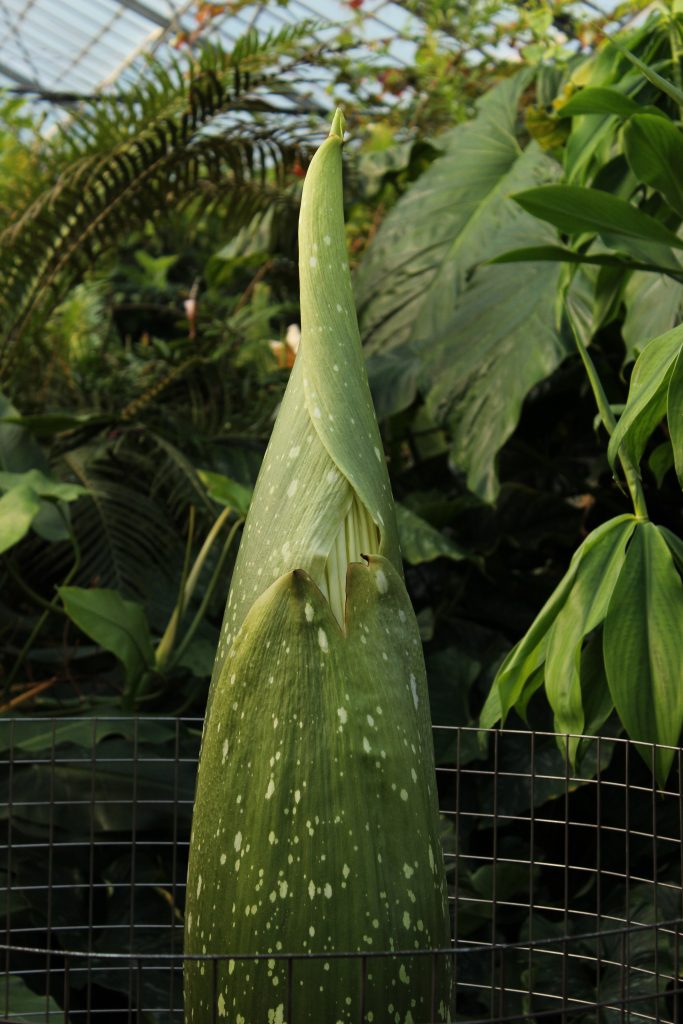
The corm weighed in at a 153.9 kg in 2008 and is an unofficial world record weight for this species.
Summer 2015 will see an exciting botanical first for Scotland when the titan arum (Amorphophallus titanum) flowers at the Botanics. This native of the Sumatran rainforest has been nurtured at the Royal Botanic Garden Edinburgh since 2003 and Garden staff are expecting large numbers of visitors to come and admire this rare spectacle, which lasts only a couple of days.
The name titan arum was coined by television presenter and naturalist Sir David Attenborough during filming for the BBC series Private Life of Plants, and reflects the giant proportions of the plant. In the years leading up to flowering the plant produces a series of single massive leaves. Each leaf dies before the next is produced. The leaf is so large the discoverer, Odoardo Beccari, initially thought he had found a small tree when he first saw the plant in 1878! Over several years the underground corm stores enough energy to produce a single flower head that itself can be taller than a man (the world record height is 3.1m). The flower head has small male and female flowers near the base of the central column (spadix), but they are concealed by the skirt-like spathe. The flower head is most famous for giving off an awful smell, and the nickname ‘New Reekie’ says it all.
The bad smell is actually sending out a message to potential pollinators. The strategy is not unique to titan arum and various unrelated plants have evolved to act as magnets for flies and beetles normally attracted to dead animals. Such plants are called ‘carrion flowers’ or ‘corpse flowers’ to reflect their specialised means of attracting pollinators. In fact, the Indonesian name of the titan arum “bunga bangkai” actually translates as corpse flower. The titan arum supercharges its smell at the critical moment during a single night when pollination is most effective. This is done by a chemical reaction that heats up the spadix so that smelly volatile chemicals can more easily drift away from the plant. A chemical cocktail provides a variety of unpleasant odours including sweaty socks (isovaleric acid), rotting cabbage (dimethyl trisulfide) and decaying fish (trimethylamine), which draws in the pollinators from elsewhere in the forest. The first glimpse of the spadix, and confirmation that the bud would produce a flower came on the morning of 12th June.
Fortunately the peak of the stench takes place over a single night, but this does mean that visitors wishing to get the full New Reekie experience will need to check for regular updates on the development of the flower. Keep an eye on the Garden’s website and social media and follow New Reekie’s own Twitter feed @TitanArumRBGE.
Find out more at the Garden’s website.



